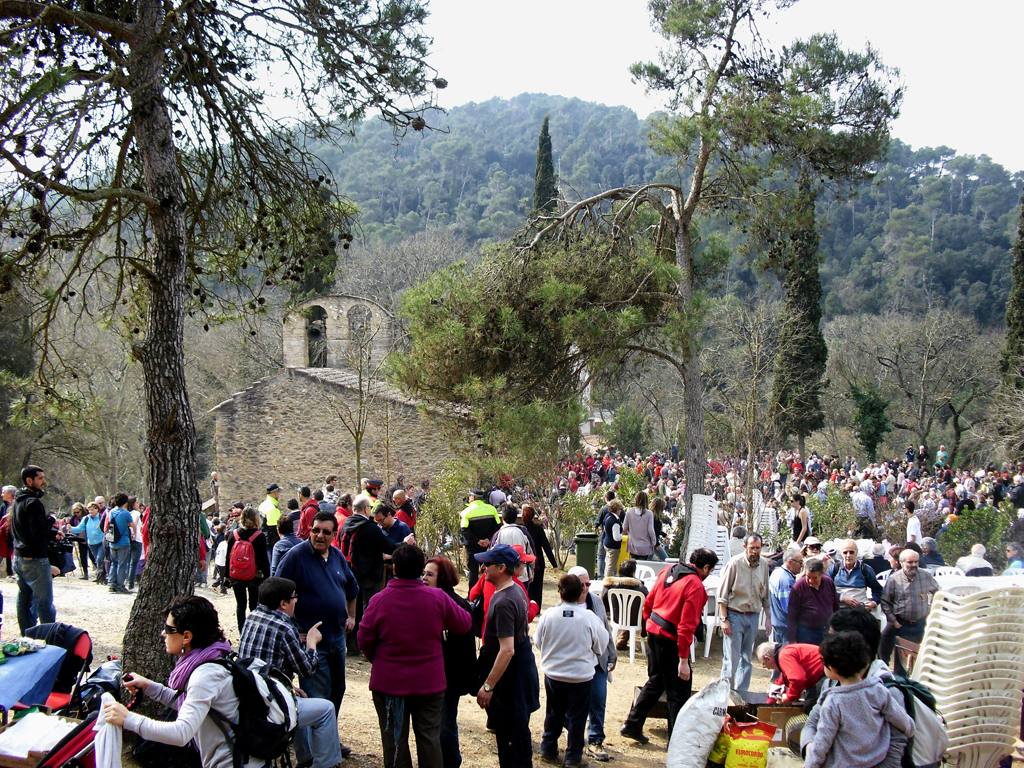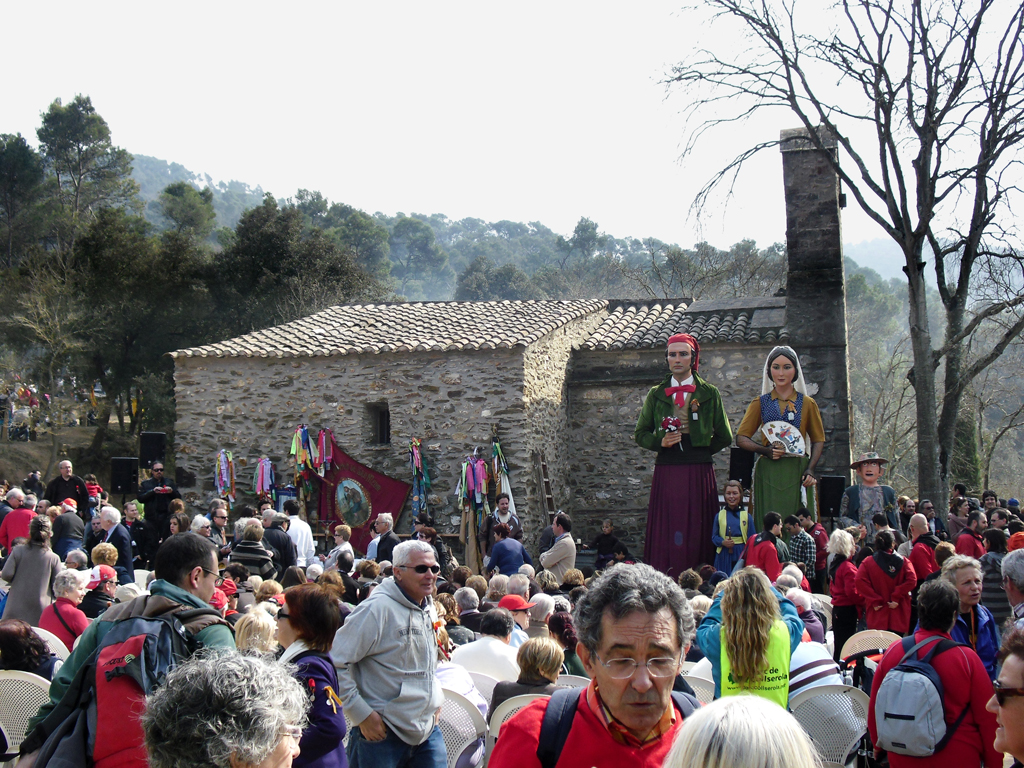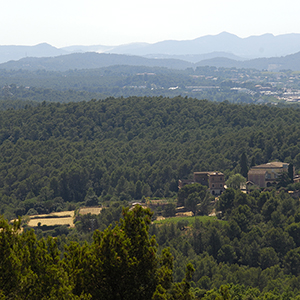Collserola is a land of popular and religious traditions. Gatherings and pilgrimages have been held here for many years, bringing together thousands of pilgrims from the towns and villages around the mountains, who make their way to the shrines situated in the park.

The tradition and veneration of Saint Medir had disappeared and was almost completely forgotten until a very popular gathering began on 3 March in the 19th century. This festival has continued since then to the present day.
In Sant Cugat del Vallès, this celebration is held in honour of the town’s co-patron saint, and it is traditional for the townsfolk to walk up to the shrine. Pilgrims usually offer a candle to the image of the saint. It is also traditional to hand out broad beans to visitors in memory of those grown by the saint and which legend has it bring good fortune. The festivities include a grand communal meal, traditional sardana dancing and giants (large figurines) and a human castle demonstration.
The celebration of the saint’s feast day is deeply rooted in a number of neighbourhoods around Barcelona, in particular Gràcia. It began back in 1830, when a baker in Gràcia, in gratitude for being healed and keeping a promise he made to the saint, decided to make an annual pilgrimage to the Shrine of Sant Medir.
Saint Medir was a martyr. However, despite the many people who venerate him, he probably did not exist, since there is no information or evidence to confirm he ever lived. It is most likely that he was invented based on legends and other real figures.
This popular gathering is held every year on the third Sunday in November at the old Romanesque Church of Sant Iscle and Santa Victòria de les Feixes in Cerdanyola del Vallès. In the morning, popular dances are performed (La Moixiganga, the Gypsy Dance, etc.), followed by a mass with the traditional handing-out of blessed bread rolls, which must be kept, as popular tradition has it that they protect against robbery. Afterwards, people dance sardanas and join in a communal meal.
The Church of Sant Iscle belongs to the parish of Sant Martí. It is a Romanesque church built in the 12th century on the site of a 10th-century church and the graveyard of anthropomorphic tombs around it.
Over the years, it has been altered and extended on a number of occasions. In 1995, various archaeological excavations were conducted and the church was restored to mark the thousandth anniversary of its first mention in documents. Cerdanyola Town Council was the driving force behind these excavations, which were also supported by the Cerdanyola Archaeological Research Collective and students of archaeology at the Autonomous University of Barcelona.

This popular gathering venerates Our Lady of Good Health. Every Whit Monday, the townsfolk make a pilgrimage to the shrine in Collserola, carrying the image of the Virgin. The celebration dates back to the 18th century and was revived in 1997 by the Friends of the Traditions of Sant Feliu. It has grown since then to become one of the town’s minor local festivities.
Once the image of the Virgin has arrived on its float at the shrine, there is a proclamation and the festivities begin with performances by various groups and choral singing and the human castle troupe. In the afternoon, the traditional raffle for a lamb is held.
One of the notable events of the day takes place as people emerge from the mass said at midday: the extraordinary Ball de la Soca (Dance of the Tree Stump), a ritual dance that undoubtedly originated in some ancient religious practice prior to veneration of the Virgin. The dance is performed by several couples around the tree stump belonging to the large tree that stood alongside the spot where the Virgin’s image was found. According to the legend of Our Lady of Good Health, this was a fertility dance that young unmarried men and women danced in the hope that it would help them to find a partner and have children.
The La Salut popular gathering is held in El Papiol on the second Sunday in September at the esplanade outside the Shrine of La Salut, which stands amid the forests of Collserola Park at the foot of Puigmadrona. The shrine is open every Sunday but can only be reached on foot.
The La Salut gathering, dedicated to Our Lady of Good Health, is organised by the Parish Church of Santa Eulàlia in El Papiol with the support of the town council and various local bodies and associations. Residents from Valldoreix also participate.
On the eve of the event, people go up to the shrine, where a communal supper is held; on the day itself, there is a communal lunch, mass and Sardana dancing.





